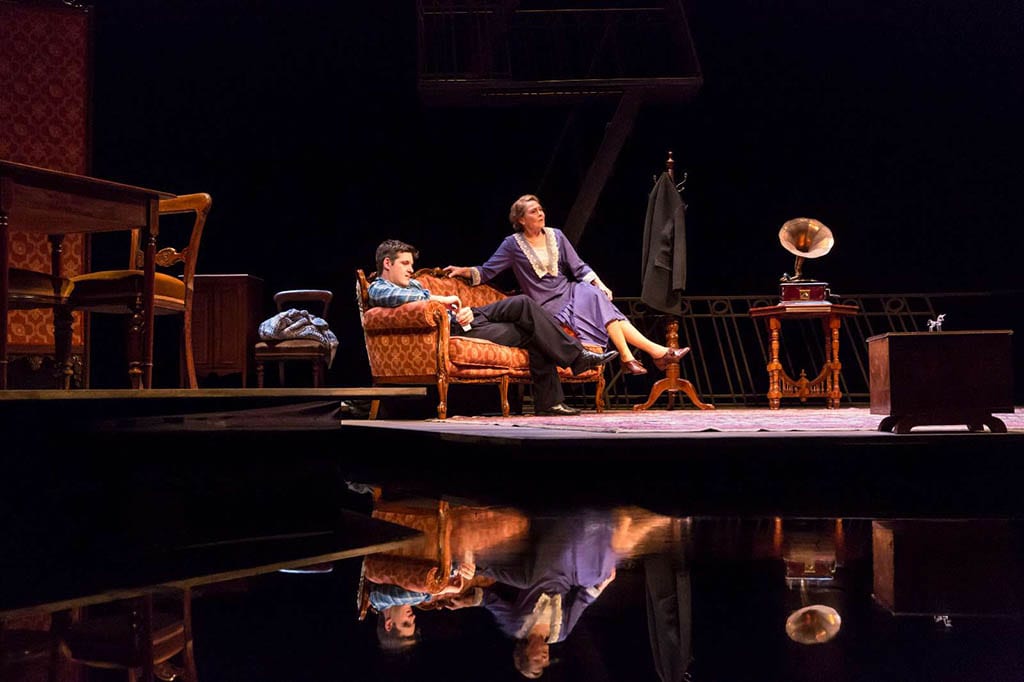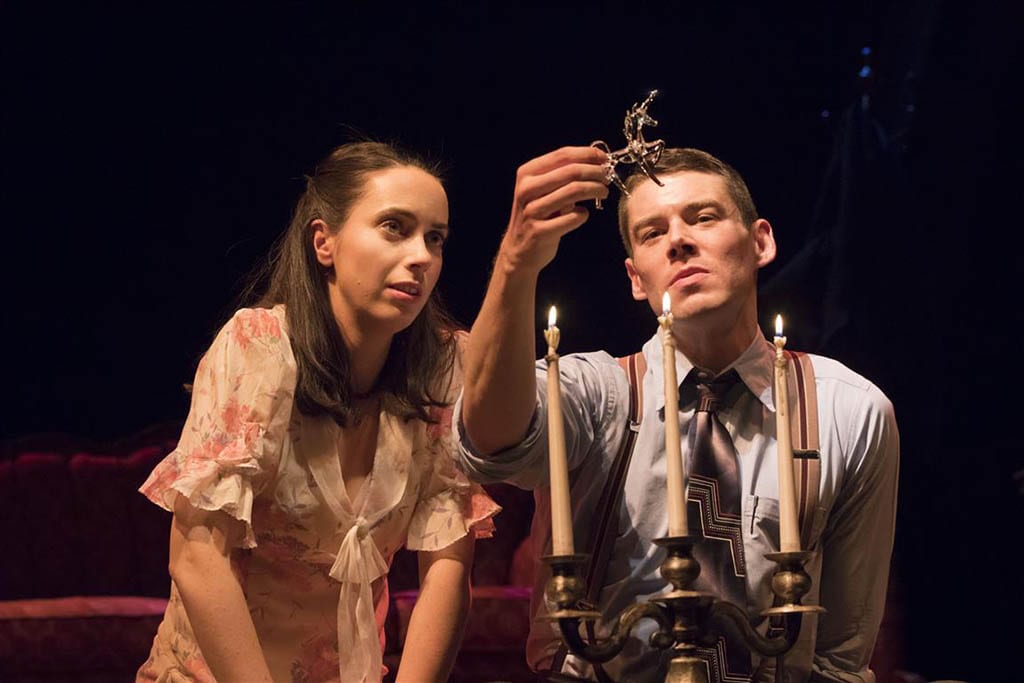Tennessee Williams’ 1944 memory play is an often performed twentieth century standard that you may think that you know well. John Tiffany’s version brings together a multi-award winning cast and creatives and somehow manages to add surprising new dimensions to a classic play. It’s a rare and beautiful treat. Originally performed on Broadway, followed by a sell out run at The Edinburgh Festival; this version has now hit the London stage.
Williams’ semi-autobiographical is set within a small drab apartment in St Louis Tom acts as the narrator. He reminisces and tells us the story of his claustrophobic youth within the family and his dreary job at a factory. His mother Amanda is an ageing Southern Belle, abandoned by her husband, living in the past, domineering and overbearing at times. His sister Laura is painfully shy and conscious of her twisted leg from childhood polio. She immerses herself in her collection of glass animals whilst Tom dreams of becoming a writer and escape. Tom brings home a work colleague and Amanda sets her sights on a way out for Laura.
Bob Crowley’s clever set design presents the apartment as a set of geometric shapes floating on a reflective black lake. The fire escape juts upwards from one side like the horn of Laura’s beloved glass unicorn. The apartment isn’t literal but has a surreal quality with minimal props, like something half remembered. Laura appears by sliding through the back of the sofa and Amanda is conjured from behind a screen. There are sequences where characters move around the set like sleep walking dancers. Haunting music by Nic Muhly and subtle lighting by Paul Arditti add to the dreamlike atmosphere.
The real revelation is Tony Award winning actress Cherry Jones as Amanda, in her first sighting on the London stage. This is an Amanda Wingfield like none you’ve ever seen before. She’s an overbearing bore at times, rattling on about her remembered fantasy of a golden youth. However, Jones brings a strong sense of empathy to the character that isn’t usually seen. This Amanda isn’t a domineering monster but a sympathetic character. She’s a mother trying to protect and nurture her children through desperate times and often missing the mark. It’s a magnificent and mesmerising performance. Equally strong is Kate O’Flynn. She’s a fragile and tremulous Laura but also displays a sense of the character’s philosophical wisdom.
All credit to John Tiffany. After his success directing “Harry Potter and the Cursed Child” he’s come up with something singular and unique which is quite a feat in a revival of a well-loved play. His passion for the piece shines through and it’s infectious.



